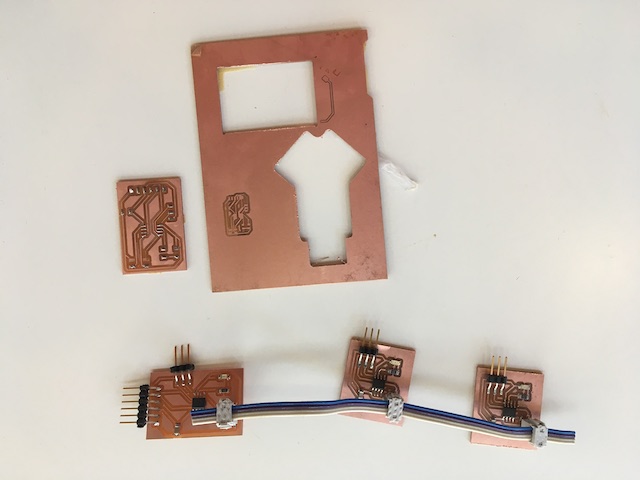14. Embedded networking and communications¶
This weeks’ subject is fascinating - I had no idea there are so many ways to speak. Quite bewildering as well, an overload of new concepts, and I did my best to prick up my ears for the bits that I might be using later on in my final project.
To get a better grip on all the concepts I’ve learned in general, and on communication in particular, I found it best to practice some more with an Arduino Uno - and for having it communicate I bought another one. I feel not comfortable enough with the boards I made to know where and how to debug once things do not work - that is largely a matter of time, the Unobtainium of this course for me.
So I read Erwin’s lecture again, watched Kamp Lintfort’s 2020 tutorial, went through the documentations of William Megill, Philip Hozier and Loes Schakenbos and started looking for strategies to make my Arduino brothers talk. Along the way I got a better idea of my unknowns.
In my final project I might use an SD card, so I bought a reader, and read up on the SPI protocol needed for that. And read more and even more and still more.
Then, in following what William did, I managed two start up a conversation through I2C.
TX on and off
Monitor
Ok. So then I learned getting the job done actually did require selfmade PCB’s… I got on the trail of Adrian Torres, and went for the serial bus with the two led nodes. I redesigned his controller board, and de-glamourized his nodes, and milled and soldered much of yesterday. For the first time without major difficulties (well the edgecut was wrong at first), partly also because of having the time without other people waiting for a machine or spot. I was proud of my shiny boards. Then in the morning I started to connect them with a flatwire, and #$@#* broke off the connector, ruining my traces. After fiddling with a loose wire for a bit to fix it Henk advised me to make a new board, which I did. But not after having to rotate my design to fit on the copperplate, and thereby somehow cropping it to half the original size - which I discovered only after milling. New board, desoldered the old one, and reused the parts. So the morning did not involve programming as I hoped- but I am actually getting better at milling…


Update: with the help of Jonathan -he doublechecked my code, assisted me in looking for shorts, and lent his programmer as a check to rule out the possibility of mine being broken - I programmed all three of my boards, after debugging and resoldering them. I cannot seem to make them actually run the programme, though. While trying to fix that, at home - (uploading the code once more) - the ftdi broke. I’ll try again tomorrow.
edit june
I did repair the ftdi, and I did try getting the network up and running, but it failed and I could not figure out why. The code was fine, the soldering as well, no shorts. I suspect maybe the connectors to the cables did not work, something I had an issue with in my Final Project, too. There Benjamin helped me out by fitting his own cables - see